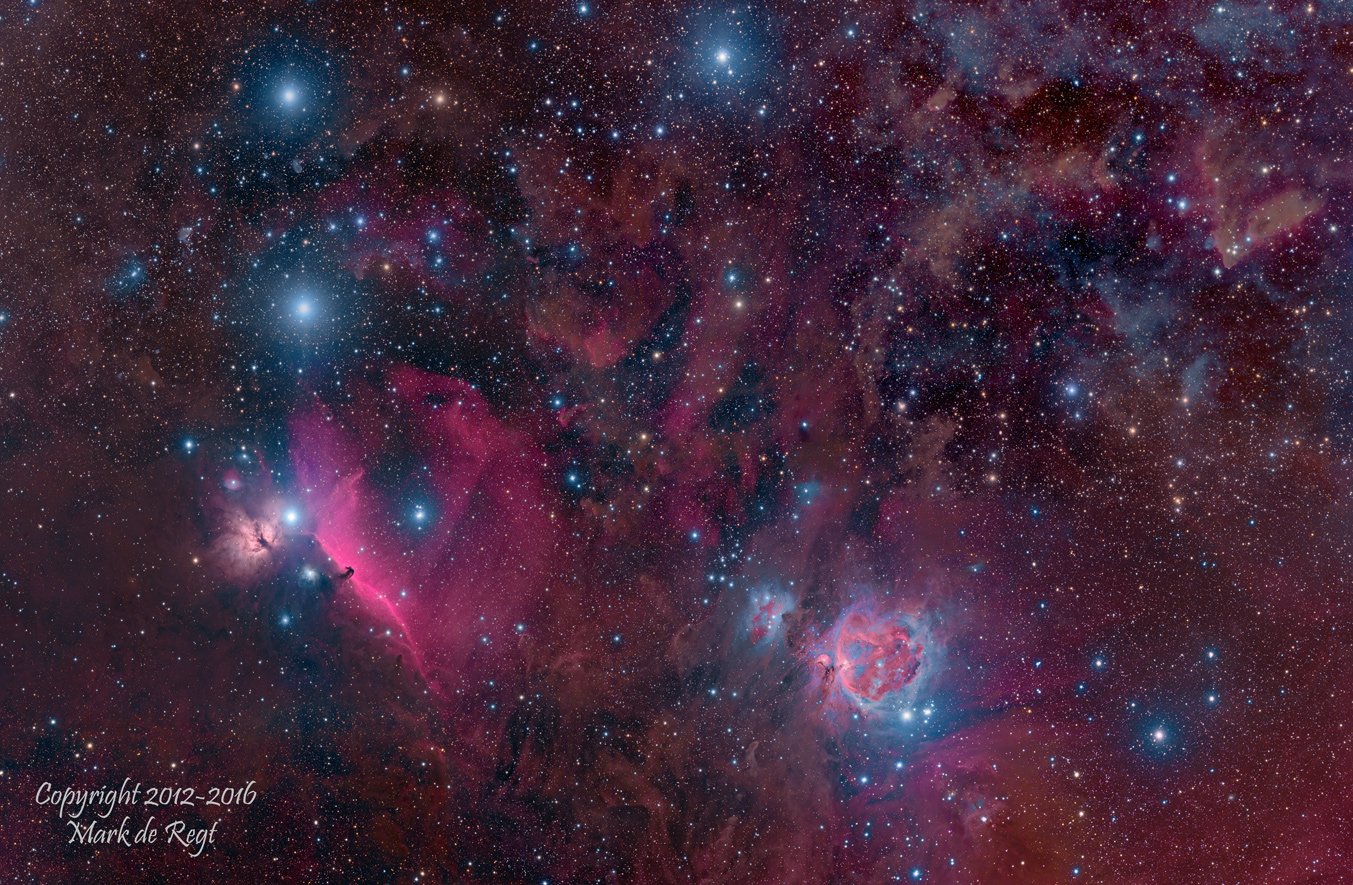
Central Orion Region: This is a decent-sized chunk of the Orion Molecular Cloud Complex,
a large star-forming region in the constellation Orion. There's a lot going on here! (It looks better in the larger versions, because the tiny stars aren't so scrunched up and fuzzy-looking.)
The three very bright, blue stars in a column toward the left side of the field are the three stars that make up Orion's belt. Yes, the Horsehead Nebula (Barnard 33), a dark nebula, seen
in silhouette against the bright emission nebula IC434 behind it, is right next to Alnitak. The Flame Nebula (NGC2024), an emission nebula of ionized hydrogen, energized by Alnikak, is the large nebula close to the Horsehead. The bright blue star above
Alnitak is Alnilam, the middle star of Orion's belt; Mintaka, the third star in Orion's belt, is above Mintaka (close to the top of the image). The blue nebulous region just to the left of
the Horsehead is NGC2023, a large reflection nebula. The large, bright double-ball well to the right of the Horsehead Nebula is the Orion Nebula (M42). We see the Orion Nebula
in our night sky as Orion's sword--it is that bright. The Orion Nebula is one of the brightest nebulae seen from Earth, and is the closest region of massive star formation to Earth.
The M42 nebula is estimated to be 24 light years across. It has a mass of about 2000 times the mass of the Sun.
The blue clouds are "reflection nebulae," reflecting the light from bright, blue stars in their midst. There are a lot of reflection nebulae in this field (but not to be confused with the bright,
blue stars in the field).
There are even some background galaxies showing through.
This area is about 1,500 light years from us; for scale, the horse's head is about five light years "tall." The wispy shape of the ionized gases will change over time (thousands of years),
as the stellar winds "blow" the nebulae.
The processing of almost all celestial objects requires "stretching" the histogram, to make all interesting things in the field visible (compared to the brightness of the brighter stars in a
field, the dimmer objects would be invisible if the dimmer objects didn't have their brightness intensified relative to the brighter objects). So, for instance, in this field, the Horsehead
Nebula is a very dim object, difficult to see (visually) even with a moderately large (say, 10 inch/254mm) telescope without dark skies and a good filter, while the Orion Nebula is easily visible
with the naked eye. In this image, so that all are visible, they appear to have similar brightnesses, but they do not (without this sort of process, it would be impossible to show even the Orion
Nebula as I have, since the brighter parts saturate the sensor in a very short time, while it takes very long exposures to get the dim, wispy stuff).
This is a ten-panel mosaic, taken over innumerable nights from 2012 to early 2016. It contains approximately 150 hours of light-frame data.
Copyright 2012-2016 Mark de Regt